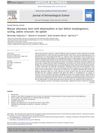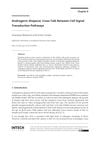TLDR Wnt5a overexpression alone doesn't cause psoriasis in mice but affects hair growth.
The study investigated whether overexpression of Wnt5a in transgenic mice could induce a psoriasis-like phenotype. Despite initial expectations, the Wnt5a transgenic mice did not exhibit psoriasis symptoms, such as inflamed hyperkeratotic plaques, and their skin appeared normal. This discrepancy was attributed to differences in epidermal differentiation and immune systems between humans and mice. However, the transgenic mice showed impaired hair follicle transition from telogen to anagen, suggesting that Wnt5a plays a role in hair follicle cycling. The findings indicated that Wnt5a and its inhibitors might be more relevant for treating hair disorders like alopecia rather than psoriasis, though further clinical studies were needed to confirm their potential applications.
 52 citations
,
October 2012 in “Journal of Dermatological Science”
52 citations
,
October 2012 in “Journal of Dermatological Science” The document concludes that mouse models are crucial for studying hair biology and that all mutant mice may have hair growth abnormalities that require detailed analysis to identify.
 1 citations
,
May 2017 in “InTech eBooks”
1 citations
,
May 2017 in “InTech eBooks” Hair loss in Androgenetic alopecia (AGA) is due to altered cell sensitivity to hormones, not increased hormone levels. Hair growth periods shorten over time, causing hair to become thinner and shorter. This is linked to miscommunication between cell pathways in hair follicles. There's also a change in gene expression related to blood vessels and cell growth in balding hair follicles. The exact molecular causes of AGA are still unclear.
 18 citations
,
October 2014 in “Experimental Biology and Medicine”
18 citations
,
October 2014 in “Experimental Biology and Medicine” Eating vitamin A affects hair growth and health by changing cell signals in mice.
 39 citations
,
January 2013 in “Journal of Investigative Dermatology”
39 citations
,
January 2013 in “Journal of Investigative Dermatology” Changing Wnt signaling can lead to more or less hair growth and might help treat hair loss and skin conditions.
14 citations
,
April 2021 in “International journal of molecular sciences” Mesenchymal stem cells may help treat hair loss by improving hair cell growth and reducing inflammation.
January 2025 in “Advances in experimental medicine and biology”



